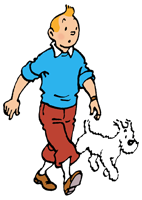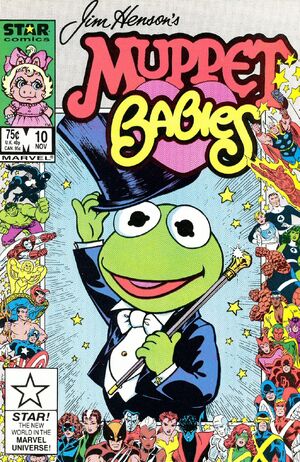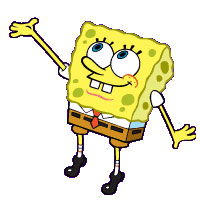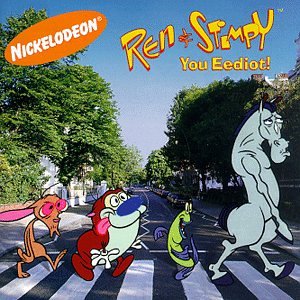
he Adventures of Tintin (French: Les Aventures de Tintin) is a series of comic strips created by Belgian artist Hergé, the pen name of Georges Remi (1907–1983). The series first appeared in French in a children's supplement to the Belgian newspaper Le Vingtième Siècle on 10 January 1929. Set in a painstakingly researched world closely mirroring our own, the series has continued as a favourite of readers and critics alike for 80 years.
The hero of the series is Tintin, a young Belgian reporter. He is aided in his adventures from the beginning by his faithful fox terrier dog Snowy (Milou in French). Later, popular additions to the cast included the brash, cynical and grumpy Captain Haddock, the bright but hearing-impaired Professor Calculus (Professeur Tournesol) and other colourful supporting characters such as the incompetent detectives Thomson and Thompson (Dupond et Dupont).
The success of the series saw the serialised strips collected into a series of albums (24 in all), spun into a successful magazine and adapted for film and theatre. The series is one of the most popular European comics of the 20th century, with translations published in over 50 languages and more than 200 million copies of the books sold to date.

The comic strip series has long been admired for its clean, expressive drawings in Hergé's signature ligne claire style. Engaging, well-researched plots straddle a variety of genres: swashbuckling adventures with elements of fantasy, mysteries, political thrillers, and science fiction. The stories within the Tintin series always feature slapstick humour, offset in later albums by sophisticated satire, and political and cultural commentary.
Tintin is a reporter, and Hergé uses this to present the character in a number of adventures which were contemporaneous to the period in which he was working (most notably, the Bolshevik uprising in Russia and the Second World War) and sometimes even prescient (as in the case of the moon landings). Hergé also created a world for Tintin which managed to reduce detail to a simplified but recognisable and realistic representation, an effect Hergé was able to achieve with reference to a well-maintained archive of images.
Though Tintin's adventures are formulaic—presenting a mystery which is then solved logically—Hergé infused the strip with his own sense of humour, and created supporting characters who, although predictable, were filled with charm that allowed the reader to engage with them. This formula of comfortable, humorous predictability is similar to the presentation of cast in the Peanuts strip or The Three Stooges. Hergé also had a great understanding of the mechanics of the comic strip, especially pacing, a skill displayed in The Castafiore Emerald, a work he meant to be packed with tension in which nothing actually happens.
Hergé initially improvised the creation of Tintin's adventures, uncertain how Tintin would escape from whatever predicament appeared. Not until after the completion of Cigars of the Pharaoh was Hergé encouraged to research and plan his stories. The impetus came from Zhang Chongren, a Chinese student who, on hearing Hergé was to send Tintin to China in his next adventure, urged him to avoid perpetuating the perceptions Europeans had of China at the time. Hergé and Zhang collaborated on the next serial, The Blue Lotus, which has been cited by critics as Hergé's first masterpiece. Interestingly, The Blue Lotus includes a reference to the European stereotypes associated with China, in a context that causes them to appear ridiculous.

Other changes to the mechanics of creating the strip were forced on Hergé by outside events. The Second World War and the invasion of Belgium by Hitler's armies saw the closure of the newspaper in which Tintin was serialised. Work was halted on Land of Black Gold, and the already published Tintin in America and The Black Island were banned by the Nazi censors, who were concerned at their presentation of America and Britain. However, Hergé was able to continue with Tintin's adventures, publishing four books and serialising two more adventures in a German-licensed newspaper.
During and after the German occupation Hergé was accused of being a collaborator because of the Nazi control of the paper (Le Soir), and he was briefly taken for interrogation after the war. He claimed that he was simply doing a job under the occupation, like a plumber or carpenter. His work of this period, unlike earlier and later work, is politically neutral and resulted in stories such as The Secret of the Unicorn and Red Rackham's Treasure; but the apocalyptic The Shooting Star reflects the foreboding Hergé felt during this uncertain political period.
A post-war paper shortage forced changes in the format of the books. Hergé had usually allowed the stories to develop to a length that suited the story, but with paper now in short supply, publishers Casterman asked Hergé to consider using smaller panel sizes and adopt a fixed length of 62 pages. Hergé took on more staff (the first ten books having been produced by himself and his wife), eventually building a studio system.
The adoption of colour allowed Hergé to expand the scope of the works. His use of colour was more advanced than that of American comics of the time, with better production values allowing a combination of the four printing shades and thus a cinematographic approach to lighting and shading. Hergé and his studio would allow images to fill half pages or more, simply to detail and accentuate the scene, using colour to emphasise important points. Hergé notes this fact, stating "I consider my stories as movies. No narration, no descriptions, emphasis is given to images".
Hergé's personal life also affected the series; Tintin in Tibet was heavily influenced by his nervous breakdown. His nightmares, which he reportedly described as being "all white", are reflected in the snowy landscapes. The plot has Tintin set off in search of Chang Chong-Chen, previously seen in The Blue Lotus, and the piece contains no villains and little moral judgment, with Hergé even refusing to condemn the Snowman of the Himalayas as "abominable".
Hergé's death on 3 March 1983 left the twenty-fourth and final adventure, Tintin and Alph-Art, unfinished. The plot saw Tintin embroiled in the world of modern art, and the story ended as he is about to be killed, encased in perspex and presented as a work of art, , although it is unknown whether he really dies at the end of the story.(wikipedia)


















































